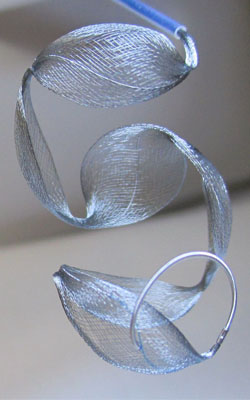
According to a report of a single centre’s experience using the Medina embolisation device (Medtronic) for the treatment of unruptured aneurysms, the device “represents a major step forward” in the treatment of intracranial aneurysms.
Marta Aguilar Perez and colleagues from the Klinikum Stuttgart, Stuttgart, Germany, explain that the Medina device is a metallic three-dimensional layered structure made from a radiopaque shape set core wire and shape memory alloy filaments, which form a self-expanding mesh. This resembles multiple leaflets that can provide flow diversion. These leaflets lie along the long axis of the core wire and, when deployed, the device assumes a spherical shape. The Medina device is inserted via a 0.021 inch internal diameter microcatheter and can be resheathed and redeployed as with standard coils. The Medina device comes in two types—framing and filler. The filler variant is softer and designed to fill the internal space after a framing Medina device has been deployed to provide a suitable basket.
At Klinikum Stuttgart, Perez et al treated 15 consecutive patients (6 women, 9 men) with unruptured aneurysms between September 2015 and April 2016. The aneurysm fundus measured at least 5mm. The angiographic appearances of treated aneurysms were evaluated at the end of the procedure and at follow-up. The clinical status, complications, and requirement for adjunctive devices were also recorded.
The Medina device was successfully deployed in all but one case and adjunctive devices were required in 10 cases. Aneurysm locations were middle cerebral artery bifurcation (n=3), internal carotid artery (ICA) bifurcation (n=1), supraclinoid ICA (n=5), posterior communicating artery (n=1), anterior communicating artery (n=2), cavernous ICA (n=2), distal basilar sidewall (n=1), basilar tip (n=1). Three patients had complications although none could be attributed to the Medina device. Immediate angiographic results were modified Raymond Roy classification (mRRC) I=1, mRRC II=5, mRRC IIIa=3, mRRC IIIb=5, and one patient showed contrast stasis within the fundus of the aneurysm. Follow-up angiography was available in 11 patients, with four showing complete aneurysm exclusion, six with stable remnants and one patient with an enlarging neck remnant.
In their experience, Perez et al conclude that the Medina embolic device “represents a novel device for the treatment of intracranial aneurysms by combining flow-diverting technology and the familiarity of standard coils. It can result in rapid exclusion of aneurysms from the circulation and has a good safety profile, although long-term outcome data are required.”
The authors further believe that the true value of the Medina device will be in combining its use with adjunctive devices such as endoluminal flow diverters that will result in rapid aneurysm exclusion.
The report was published in the Journal of NeuroInterventional Surgery.













